Almost four months since the last Product Reviews Update (PRU) rolled out, Google released the third in the PRU series on March 23, 2022. PRUs can cause a lot of volatility for sites with reviews content, and the first two were core update-like for some. With each PRU, Google is looking to continue its evolution with surfacing the highest quality and most insightful reviews content in the search results. And that means thinner, lower-quality posts should drop in rankings as more thorough content rises in the search results. More about that soon.
In this post, I’ll cover several important observations and findings based on the March 2022 Product Reviews Update. I am not going to cover the PRU overall, since I have done that heavily in my first two posts about the April 2021 and Dec 2021 updates. Instead, I’ll cover some interesting findings based on analyzing sites impacted by the March PRU (both surges and drops). That includes the types of content potentially helping sites win during the PRU, some lower-quality reviews content slipping through the cracks, more about dueling machine learning algorithms (broad core updates and PRU), the importance of review testing labs, the power of links (or not), and more. I’ll also revisit what I call the Wirecutter Standard with an interesting example of a site employing that strategy that missed the latest PRU cutoff.
Here’s a quick table of contents for those that want to jump around:
- Periodic refresh still necessary.
- Linking to multiple sellers.
- Multimedia (especially video) helping sites, even when not original?
- Content slipping through the cracks. A potential loophole.
- Interesting Case: Employing the Wirecutter Approach and missing the PRU cutoff.
- Watch for intent shifts. It could be Google, and not your content.
- Dueling machine learning algorithms (again), and surfing the gray area.
- Ignore user feedback at your own peril.
- Testing Labs: Follow the leader and how review testing labs will continue to expand.
- The Power of Links: inconsistent findings (again).
- Key takeaways for site owners and affiliate marketers.
Reminder: PRUs Still Require A Periodic Refresh:
Regarding seeing changes over time, the PRU still requires a periodic refresh (as you can see via the massive swings in visibility during each rollout). So, Google still needs to “push a button” and roll out the update. So far, that’s been separated by a number of months (eight months in between the April and December PRUs and then almost four months in between the December and March PRUs). Just keep this in mind while working on remediation. You will need another PRU to roll out to see significant improvement (if you have been negatively impacted by a previous Product Reviews Update). I’ll cover more about dueling machine learning algorithms and the future of the PRU later in this post.
For example, I asked Google’s Danny Sullivan about the type of rollout when the first PRU launched in April of 2021:
Linking to multiple sellers: Not included in the algorithm yet, but showing up more and more.
With the December Product Reviews update, Google explained that sites should consider providing links to more than one retailer to purchase products. That surprised many affiliate marketers since Amazon is the dominant e-commerce retailer benefiting from affiliate links (and it’s actually against Amazon’s TOS to link to other retailers when using data via its API.)
Google explained it was just a recommendation and not being used algorithmically in the PRU (yet), but that definitely was a shot across the bow of Amazon. Well, the March PRU rolled out and I didn’t see any mention of that factor being enforced. So, I pinged Google’s Alan Kent to learn more. Alan explained that Google was still not enforcing that aspect at the moment.
That’s good to know, but my recommendation is to link to more than one seller, if possible (to future-proof your site), but it’s not a requirement as of now. While analyzing the March PRU, I noticed many more affiliate marketers are indeed linking to multiple sellers, when possible. In the past, I saw many reviews linking to just Amazon. That has definitely changed based on the sites I’ve been analyzing and I’m sure Amazon is watching closely. That type of change could dilute their affiliate revenue a bit (as affiliate sites start linking to other retailers from their reviews content). We’ll see how this plays out…
For example, a site linking to two sellers from reviews content:
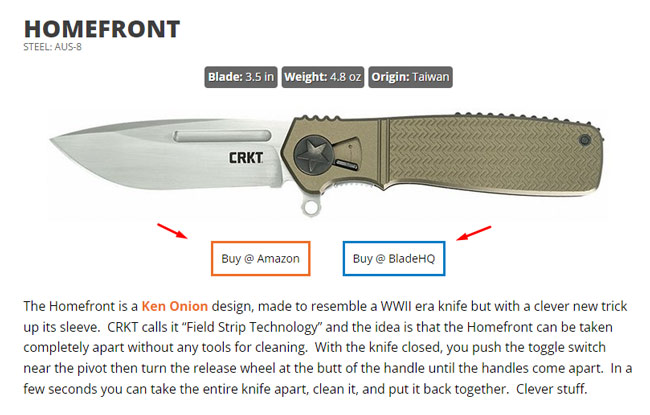
Here is another review linking to multiple sellers (four in this example):
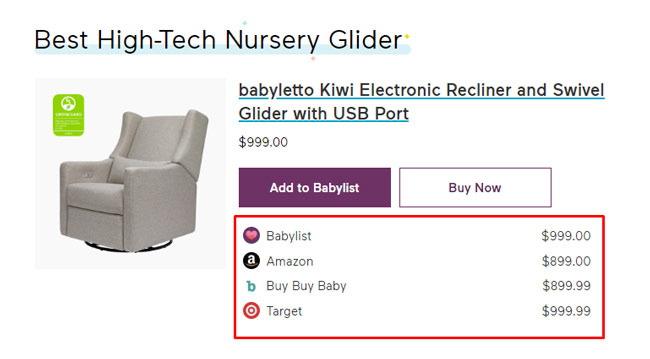
Video: A picture is worth a thousand words. And video can be worth ten thousand.
As part of Google’s best practices, they explained to “provide evidence such as visuals, audio, or other links of your own experience with the product, to support your expertise and reinforce the authenticity of your review.” And in my post about the April Product Reviews Update, I explained how original images, video, and gifs could help readers get a much better feel for a product.
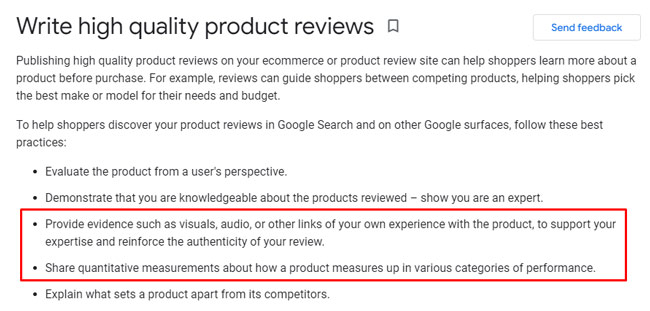
Well, I’ve noticed an interesting trend while analyzing sites impacted by the PRU. I’m seeing much more video embedded in the articles. I think that’s great, but the devil is the in details. And this could be a weird loophole.
For example, if you produced an original video based on reviewing a product, that’s outstanding. But what if you didn’t shoot a video and simply embedded a video of the product from another creator, manufacturer, etc.? I’m seeing that technique used often while analyzing reviews and I think that could be a short-lived benefit.
If you are an affiliate marketer using video in your review articles, I would take a hard look at those videos and determine if they are truly helpful and if they reinforce your first-hand use of those products. Also, and this is just my opinion, but having original video is more powerful than leveraging someone else’s video. Actually, any site can embed the same exact video in their own review articles.
I know high quality video is not easy to produce, but it can really set your reviews apart from the competition. And if Google can figure out what’s truly original and insightful from a video standpoint, then having your own videos could only help (as long as they are high quality, insightful, and valuable for readers).
For example, here is an original video embedded in a review:

A PRU loophole? Low-quality lists of products ranking well for some queries.
With previous Product Reviews Updates, I noticed some loopholes. There were some sites ranking with a very basic format (no review content actually). Although that specific loophole seemed to be closed leading up to the March PRU, I came across other examples of sites ranking with thin or low-quality reviews content. Actually, they weren’t really reviews. Instead, there was basically just a list of “best products” with minimal content, and those pages are ranking well for various review queries.
I can’t imagine this will stay as-is. I’m sure Google will pick up on this, refine the Product Reviews algorithm and handle accordingly. Whether that requires another Product Reviews Update, or if it happens before then, I expect those pages to sink in the rankings over time. If I were running those sites, I would definitely look to improve the pages that are ranking well now. They are far from the Wirecutter Standard, which is what I recommended trying to achieve in my previous posts about the PRUs. That’s a good segue to an interesting case I’ve been working on, which I’ll cover next..
First, here are two examples of urls surging with the March PRU that contain low-quality review content. Actually, it’s not even review content, it’s more like a list of visuals and links. Notice how they surge out of nowhere during the March PRU.
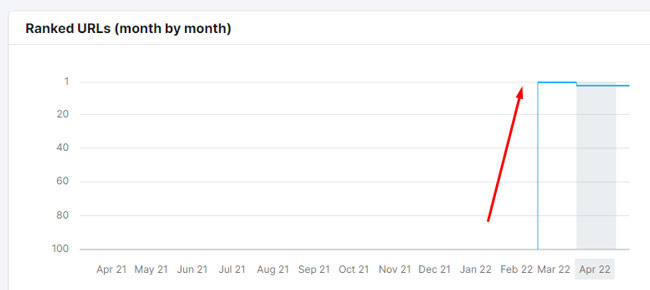

Interesting Case: Employing a Wirecutter Approach but missing the cutoff:
Just like with broad core updates, sites should look to improve their reviews content significantly, and over the long-term. Google is using machine learning to evaluate sites and content over time, so quick and small changes will not suffice. Taking Google’s best practices to heart and implementing big changes across your reviews content is the way to get out of the gray area. That’s why I have recommended taking a Wirecutter approach to producing reviews content. You can read more about that in my previous posts, but publishing killer content, based on extensive first-hand testing and use, supported by original visuals and multimedia content, is a very strong approach to employ.
But… it’s not easy. It takes an enormous amount of time, energy, resources, money, etc.
Well, I’m helping a client that got hammered by the April PRU and then saw a partial recovery with the December PRU, that took my comments about employing a Wirecutter approach to heart. After analyzing the site, the content, user experience, etc., we spoke a lot about the Wirecutter Standard, and the site owner was all in. Over the past few months, they have mapped out their testing process, targeted certain categories for using a Wirecutter approach, and have already published a number of review articles based on that process.
And those are killer pieces of content.
Although produced by a small team, the new content is outstanding, provides a wealth of insightful and helpful information about the products being reviewed, provides their own rating system based on the areas being reviewed, they have original photos, gifs, and video that support the content, and more.
But for the March 2022, they missed the “cutoff”. The content was published right before the March Product Reviews Update rolled out. Therefore, those new killer articles weren’t going to help much when the March PRU rolled out.
On that note, Google is on record that recent changes aren’t reflected in major algorithm updates. Google needs to see significant changes over time, and over the long-term. The site just didn’t have the time…
And here is Google’s John Mueller explaining a similar situation in a recent hangout video (when asked if a recent change could have led to a drop from a broad core update). John explained that the information used for broad core updates is collected over the long-term. And the same applies to an update like the Product Reviews Update (which is using machine learning when evaluating content and sites):
The timing was unfortunate for my client, but we are super-excited to see the next PRU roll out. I’ll post more information about how that goes after the next Product Reviews Update. If my client keeps on publishing Wirecutter-like content, then I would imagine they will see nice gains. We’ll see.
Testing Labs: Follow the leader and how review testing labs will continue to expand.
Regarding “testing labs”, I’ve already covered Wirecutter heavily in my other posts about the PRU, but it’s worth mentioning that Good Housekeeping and Verywell also have their own testing labs. You can check out more information about those efforts by following the links below, but if you are producing reviews content, then I highly recommend trying to emulate what those companies are doing.
I know it’s not easy to do, but it can help future-proof your reviews content. The more you can map out a detailed review process, the more you will organically cover what Google’s algorithms are looking for. For example mapping out a ratings scale, providing pros and cons, actually testing out products (first-hand experience), producing visuals that support the testing (photos, videos, gifs, etc.), so on and so forth.
Wirecutter: https://www.nytimes.com/wirecutter/blog/anatomy-of-a-guide/
Good Housekeeping Institute: https://www.goodhousekeeping.com/institute/about-the-institute/a19748212/good-housekeeping-institute-product-reviews/
Verywell Testing Lab: https://www.verywellfit.com/commerce-guidelines-and-mission-4158702
The Good Housekeeping Institute:
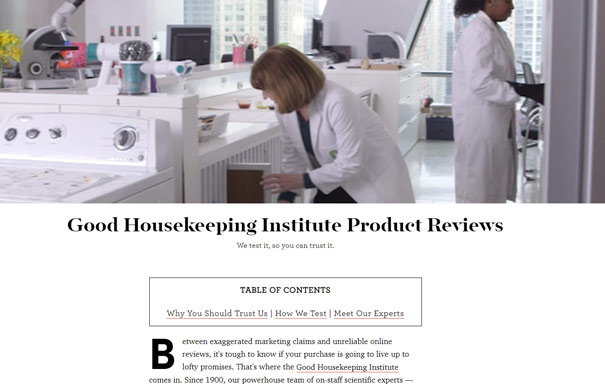
Wirecutter: New York Times
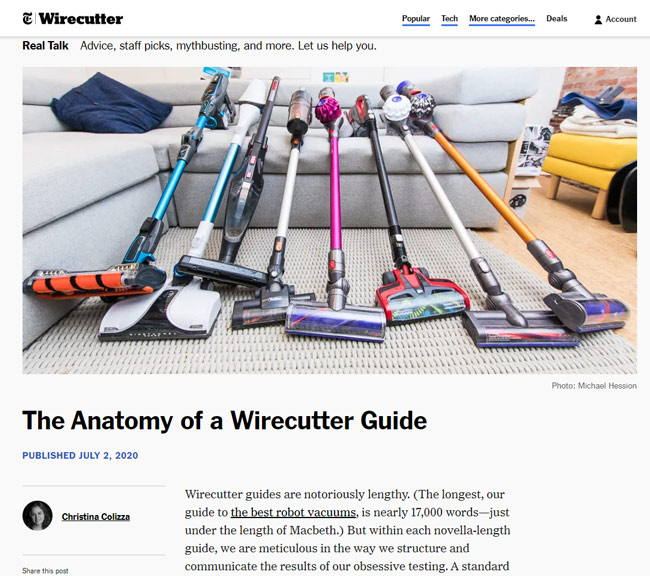
A quick note about intent shifts. It’s not you, it’s Google.
In my post about the December Product Reviews Update, I mentioned that there were some intent shifts going on where e-commerce retailers started ranking for reviews content, and review sites dropped to page two or beyond. And on the flip side, sometimes when e-commerce retailers were ranking well, then an intent shift happened and reviews content started to rank higher (pushing the e-commerce retailers lower).
This was typically happening with head terms (so queries lacking “best”, “reviews” or “compare”). Well, we saw that again with the March PRU. The reason I bring this up is because sometimes it’s not your content that’s the problem. It could just be an intent shift, which you have no control over. I covered that in my post about the difference between relevancy adjustments, intent shifts, and overall site quality problems.
So, if you see a drop during the PRU, definitely run a delta report and determine the root cause of the drop. And if it’s an intent shift, you might not need to radically improve your content (if it’s already high quality, insightful, valuable, etc.)
Here is an example of an intent shift happening with the December Product Reviews Update and then reversing with the March PRU. The site had no control over this…
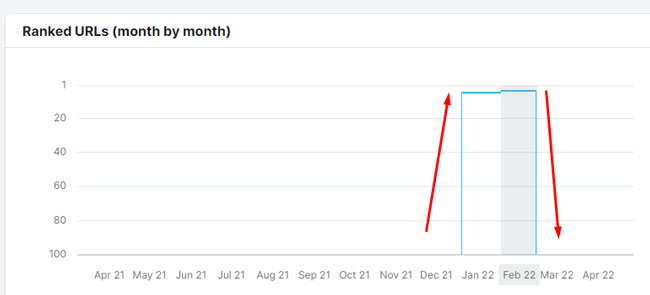
Google’s dueling machine learning algorithms are… still dueling: And this needs to be addressed (IMO).
In my post about the December Product Reviews Update, I mentioned dueling machine learning algorithms and how that’s a problem for Google. That’s where sites either surged or dropped during broad core updates, and then saw the opposite movement with a Product Reviews Update.
Well, I saw more of that with the March Product Reviews Update. Sites that were impacted in June, July or November with broad core updates saw the opposite movement with the March PRU.
With that happening, Google is sending serious mixed signals to site owners. For example, is the site’s content high quality, or not? Only Google’s machine learning systems know. Muahahaha. 🙂
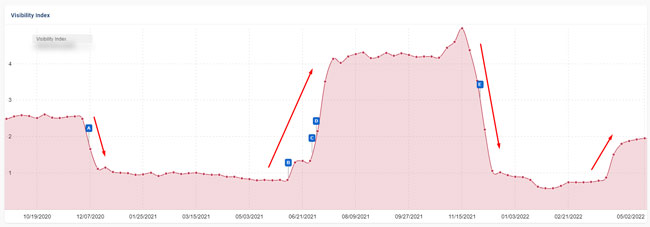
It’s also a good time to reiterate that Google is using machine learning with both broad core updates and the Product Reviews Update, so it’s not like they are using 10, 20, or even 100 factors. Google could be sending many more signals to the machine learning system and then letting the system determine weighting (and ultimately rankings).
Again, welcome to SEO. Bing has explained more about that in the past. Here is Fabrice Canel on how Bing is using machine learning with its core ranking algorithm. They send “thousands of signals to the machine learning system and it determines the weighting”. This is ultra-important to understand. I linked to the video from my tweet below.
Also, I do believe the Product Reviews Update will be incorporated into Google’s core ranking algorithm at some point (and that will be a good thing). In my opinion, you can’t have a major algorithm update focused on quality impact a site one way and then another algorithm update focused on quality reviews impact the site in the opposite way. That’s maddening for site owners and makes no sense. But before that happens, Google needs to expand the PRU to other languages beyond English. That hasn’t happened yet, so I believe that will happen first and then maybe the PRU gets baked into Google’s core ranking algorithm. Again, we’ll see.
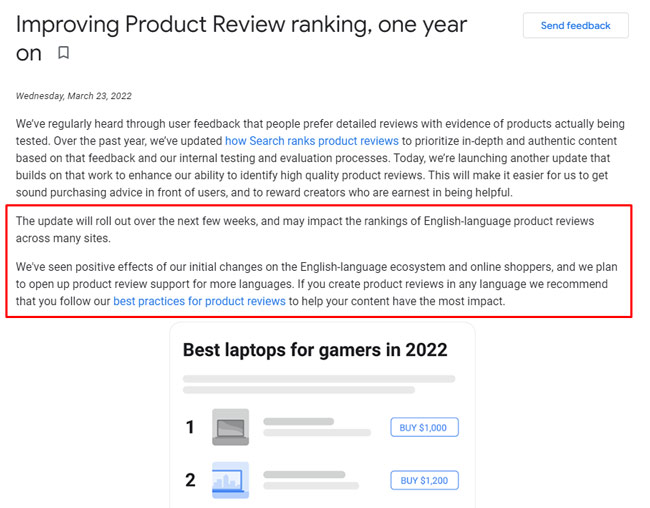
Keep your eyes peeled. Ignore user feedback at your own peril.
I’ve covered the power of user studies before (especially with regard to Google’s broad core updates). It can be incredibly powerful to hear directly from objective users as they browse your site, consume your content, etc. But sometimes you can gain some of that feedback without even running a user study.
For example, I was analyzing one site that was negatively impacted during the March PRU that had user comments on each review page. Well, the comments can be telling… I found several comments on articles hammering the quality of reviews or questioning the expertise of the authors.
For example, “the reviewer clearly doesn’t know what they are talking about”, “how about updating the article”, and more.
Here is an example of what that looked like. The image has been slightly edited to protect the innocent. 🙂
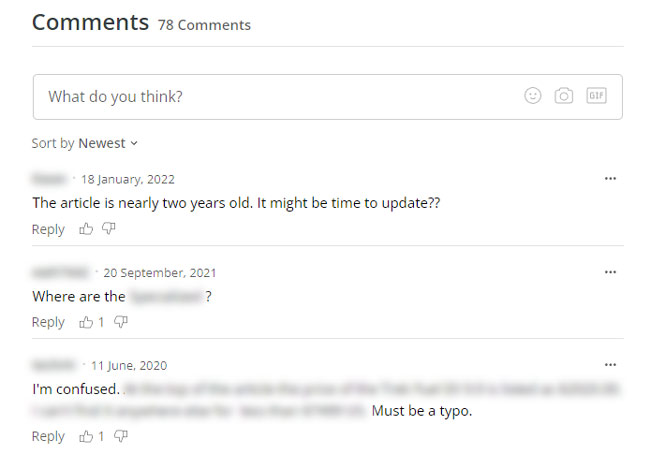
That is incredible feedback for the site owner and they should take it to heart. Most users will not spend the time to post a comment like that, so it must be really bad if they are leaving those comments. And I’m not saying Google is using those comments directly when evaluating reviews (although it could absolutely be one of the many signals that are being sent to the machine learning system). But if I was the site owner, I would take that feedback to heart and figure out what needs to be updated. Then move as quickly as possible to improve the content. And maybe running a full-blown user study would be a smart next step.
Links. Still not the end-all for the Product Reviews Update.
In my posts about the April and December 2021 Product Reviews Updates, I explained how links were not the end all. For example, some sites surging had weaker link profiles overall and some sites dropping had stronger link profiles. Basically, there was not a clear connection between the strength of the link profile and how the site performed with the Product Reviews Update. Again, that could be the impact of a machine learning system that takes many signals into account and determines weighting.
So has that changed with the March PRU?
Not really. I’m still not seeing a major connection between link profile strength and how reviews sites are performing during PRUs. Sure, some powerful sites are surging, but is it because of their link profile? There are plenty of examples of the opposite… For example, sites with much weaker link profiles surging as well. Anyway, it’s just worth noting since it’s clear that Google’s machine learning-based PRU algorithm is using many signals (and many of those signals seem more focused on the quality of content).
Here are two examples of sites surging during the March PRU with weaker link profiles:
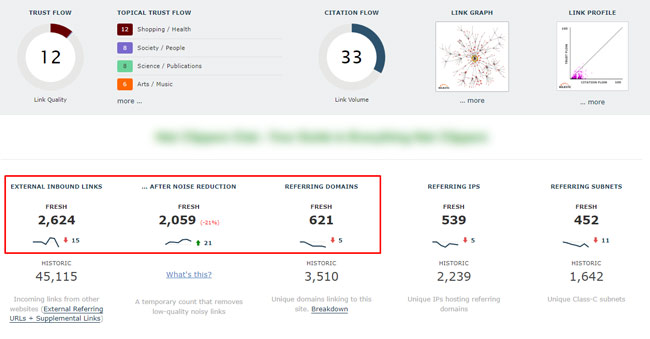
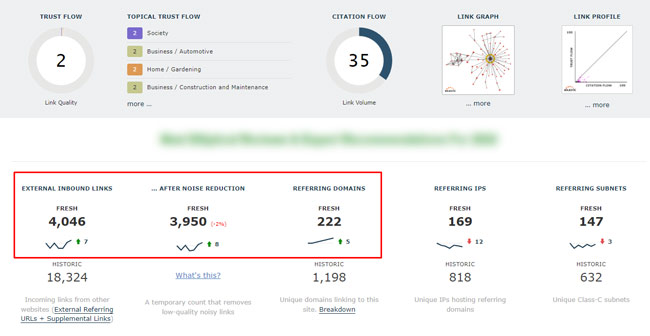
And here are two sites dropping during the March PRU with stronger link profiles:
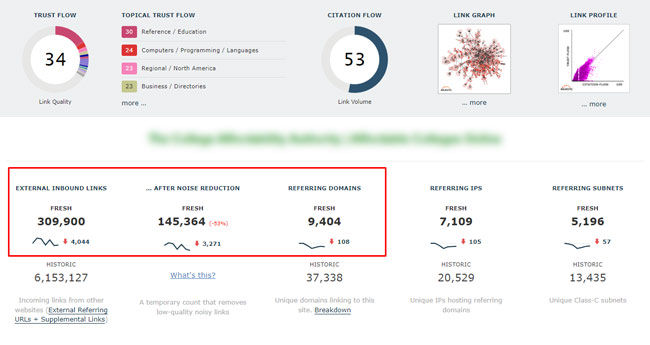
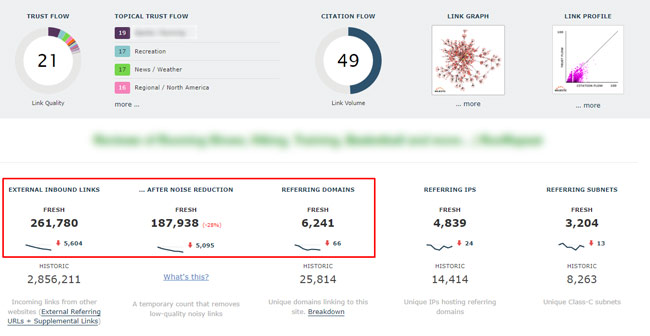
Key takeaways and tips for affiliate marketers and site owners:
- Internalize Google’s best practices: Read Google’s best practices and take them to heart. Internalize them and then form a plan of attack for improving your reviews content.
- Run a user study: User studies are absolute gold for SEO. Leverage Google’s best practices for product reviews and craft tasks and questions. Then use a strong platform for user testing (like usertesting.com). Gain feedback, watch video, and listen to users. The results can be enlightening.
- Strive to be the Wirecutter of your niche: As I mentioned in my previous posts about the Product Reviews Update, work to become the Wirecutter or Good Housekeeping Institute for your niche. Yes, it’s challenging to do that, but it can pay huge dividends down the line.
- Give readers multiple buying options: Link to multiple sellers for purchasing products (beyond just Amazon). It’s a best practice from Google… even if they say it’s not being enforced (yet). It’s a smart way to future-proof your reviews content (and protect from subsequent negative PRU impact).
- Invest in visuals: Provide original photography, video, and gifs supporting your reviews content. It’s a great way to provide users with a killer view of the products you are covering while also showing users how you actually tested the products. Google has explained it’s looking for these things (it’s a best practice), and it can set you apart from the crowd. You can also repurpose that multimedia content for use on social media (like YouTube, Tiktok, Instagram, etc.) It’s a win-win.
Summary: The PRU continues to evolve.
Google’s March 2022 Product Reviews Update was another powerful update for affiliate marketers. It was the third in the series, and we can expect more as the PRU continues to evolve. Like broad core updates, Product Reviews Updates roll out just a few times per year. Therefore, if you have been negatively impacted by the latest PRU, then I highly recommend forming a strong plan of attack. The more you can significantly improve your reviews content, and over the long-term, the better position you can be in when the next PRU rolls out. Good luck.
GG
Original Source: Analysis of Google’s March 2022 Product Reviews Update (PRU) – Findings and observations from the affiliate front lines
